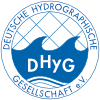HN Ausgaben wählen
- HN 132 (9)
- HN 131 (17)
- HN 130 (10)
- HN 129 (8)
- HN 128 (10)
- HN 127 (6)
- HN 126 (10)
- HN 125 (11)
- HN 124 (8)
- HN 123 (10)
- HN 122 (9)
- HN 121 (10)
- HN 120 (7)
- HN 119 (10)
- HN 118 (7)
- HN 117 (10)
- HN 116 (14)
- HN 115 (10)
- HN 114 (6)
- HN 113 (10)
- HN 112 (7)
- HN 111 (9)
- HN 110 (9)
- HN 109 (11)
- HN 108 (8)
- HN 107 (9)
- HN 106 (7)
- HN 105 (14)
- HN 104 (6)
- HN 103 (11)
- HN 102 (8)
- HN 101 (9)
- HN 100 (13)
- HN 097 (1)
Die neue ATAIR mit LNG-Antrieb
Das Vermessungs-, Wracksuch- und Forschungsschiff (VWFS) ATAIR des Bundesamtes für Seeschifffahrt und Hydrographie (BSH) ist mit 32 Jahren das älteste Schiff der BSH-Flotte. Für den derzeit bei der Fassmer-Werft im Bau befindlichen Ersatzbau wird sehr bewusst der Einstieg in LNG zur Energieerzeugung an Bord umgesetzt. Daneben sind erhöhte Anforderungen an die Akustik des Schiffes umzusetzen. Dieser Artikel gibt einen Überblick in die Aufgaben der neuen ATAIR, die Anforderungen für den Neubau sowie die technische Umsetzung.
ATAIR | BSH | LNG – liquefied natural gas | GTL – gas to liquids | Ship Design | "Bubble-sweep-down"-Test
- Ausgabe: HN 112, Seite 24–26
- DOI: 10.23784/HN112-05
- Autor/en: Kai Twest
"Ohne Hydrographie läuft gar nichts"
Petra Mahnke hat Ozeanographie studiert, anschließend jahrelang bei einem KMU im Projektmanagement und im Marketing gearbeitet. Gute Voraussetzungen für ihre aktuelle Aufgabe: Seit 2006 ist sie Geschäftsführerin der Gesellschaft für Maritime Technik (GMT), deren Ziel es ist, Wirtschaft und Wissenschaft zusammenzubringen. Ein Gespräch über Frauen in Führungspositionen ohne Quote, über die Notwendigkeit von Lobbyarbeit und des Gesprächs mit NGOs, über den Umgang mit den Auswirkungen des Meeresspiegelanstiegs und über Antworten auf Fragen, die noch kein Politiker gestellt hat.
GMT | Meerestechnik | Hydromod | Maritime Agenda 2025 | NMMT | Maritime Forschungsstrategie | autonome Schifffahrt | Meeresspiegelanstieg
- Ausgabe: HN 112, Seite 16–23
- DOI: 10.23784/HN112-04
- Autor/en: Petra Mahnke, Lars Schiller, Holger Klindt
Von der Norddeutschen Seewarte zum BSH
150 Jahre maritime Dienstleistung und Forschung
Oberhalb der Landungsbrücken in Hamburg an der Elbe residiert das Bundesamt für Seeschifffahrt und Hydrographie (BSH). Zusammen mit seinem zweiten Dienstsitz in Rostock ist es die zentrale maritime Behörde der Bundesrepublik Deutschland. Ungefähr am gleichen Ort nahm 1868 die Norddeutsche Seewarte ihre Arbeit auf. Sie begründete die maritimen Dienstleistungen und die maritime Ressortforschung in Deutschland. Zogen in jenen Jahren noch die eindrucksvollen Windjammer an den Landungsbrücken vorbei, sind es heute die großen Handels- und Containerschiffe und die neuartigen Forschungs- und Spezialschiffe. Seit ihrer Existenz hat die Behörde, die im Dienst für Schifffahrt und Meer steht, die Schiffe bei der täglichen Arbeit im Blick.
Norddeutsche Seewarte | Deutsche Seewarte | DHI | BSH | Segelanweisung
- Ausgabe: HN 112, Seite 13–15
- DOI: 10.23784/HN112-03
- Autor/en: Thomas Dehling
A modern Hydrographic Office
Hydrographic Offices and related organisations nowadays face a two-sided challenge: Survey and map the inland and offshore waters and position themselves as service-oriented partners in the maritime sector. The concept of Marine Spatial Data Infrastructures (MSDI) can help building up a platform to organise, produce and disseminate modern information products.
Hydrographic Office | Marine Spatial Data Infrastructure – MSDI | ENC | web app
- Ausgabe: HN 112, Seite 10–11
- DOI: 10.23784/HN112-02
- Autor/en: Rafael Ponce
Individual recognition schemes in hydrography
Individual recognition schemes assess a professional against the necessary competencies for a particular profession and award the successful candidate with a certification. The professionals keep their certifications as long as they meet the requirements. In 2018, the German Hydrographic Society (DHyG) prepared a questionnaire in order to conduct a survey on the need of individual recognition schemes in Germany and Europe. This article discusses the most important results of the study.
individual recognition schemes | personal certification | Standards of Competence | Cat A | Cat B | IBSC
- Ausgabe: HN 111 Seite: 49–52
- DOI: 10.23784/HN111-09
- Autor/en: Cigdem Askar, Tanja Dufek, Harald Sternberg


